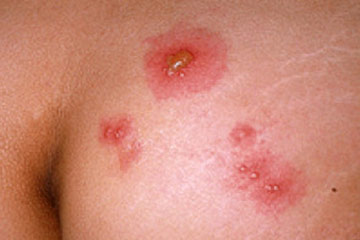Treatment of ocular histoplasmosis syndrome (OHS)
How is ocular histoplasmosis syndrome treated?
The only proven treatment for OHS is a form of laser surgery called photocoagulation. A small, powerful beam of light destroys the fragile, abnormal blood vessels, as well as a small amount of the overlying retinal tissue.
Although the destruction of retinal tissue during the procedure can itself cause some loss of vision, this is done in the hope of protecting the fovea and preserving the finely-tuned vision it provides.
How effective is laser surgery?
Controlled clinical trials, sponsored by the National Eye Institute, have shown that photocoagulation can reduce future vision loss from OHS by more than half. The treatment is most effective when:
- The choroidal neovascularization (CNV) has not grown into the center of the fovea, where it can affect vision.
- The eye care professional is able to identify and destroy the entire area of CNV.
Does laser surgery restore lost vision?
Laser photocoagulation usually does not restore lost vision. However, it does reduce the chance of further CNV growth and any resulting vision loss.
Does laser surgery cure OHS?
No. OHS cannot be cured. Once contracted, OHS remains a threat to a person's sight for their lifetime.
People with OHS who experience one bout of abnormal blood vessel growth may have recurrent choroidal neovascularization. Each recurrence can damage vision and may require additional laser therapy. It is crucial to detect and treat OHS as early as possible before it causes significant visual impairment.
Is there a simple way to check for signs of OHS damage to the macula?
Yes. A person can check for signs of damage to the macula by looking at a printed pattern called an Amsler grid. If the macula has been damaged, the vertical and horizontal lines of the grid may appear curved, or a blank spot may seem to appear.
Many eye care professionals advise patients who have received treatment for OHS, as well as those with histo spots, to check their vision daily with the Amsler grid one eye at a time. Patients with OHS in one eye are likely to develop it in the other.
What help is available for people who have already lost significant vision from OHS?
Scientists and engineers have developed many useful devices to help people with severe visual impairment in both eyes. These devices, called low vision aids, use special lenses or electronics to create enlarged visual images.
An eye care professional can suggest sources that provide information on counseling, training, and special services for people with low vision. Many organizations for people who are blind also serve those with low vision.






